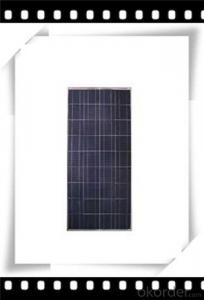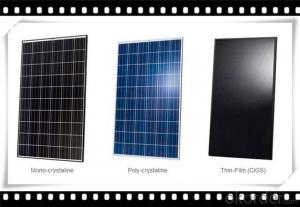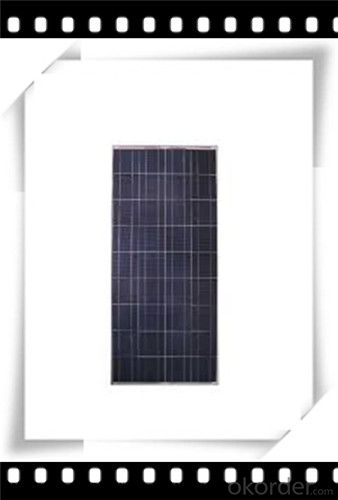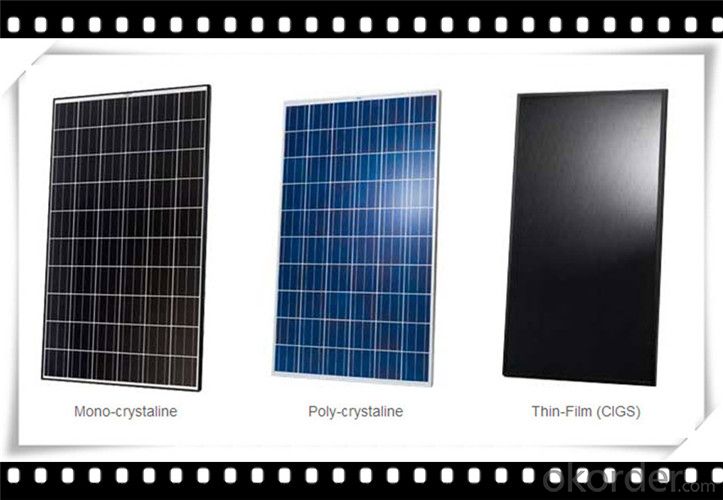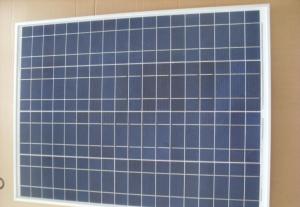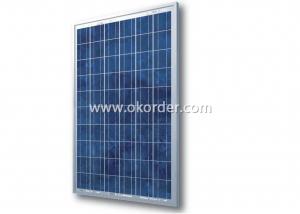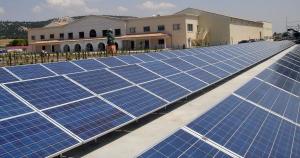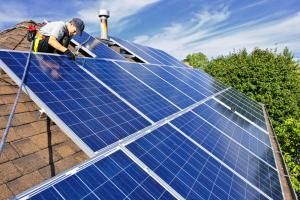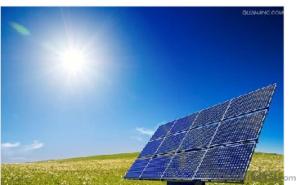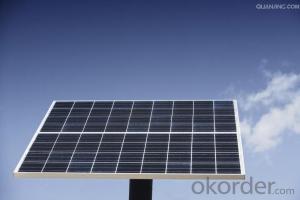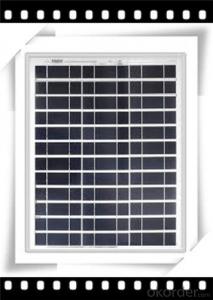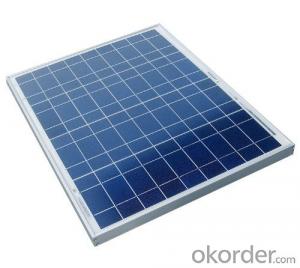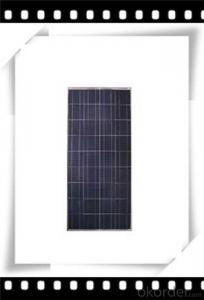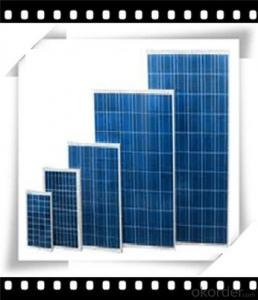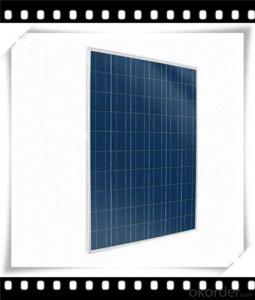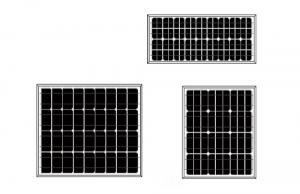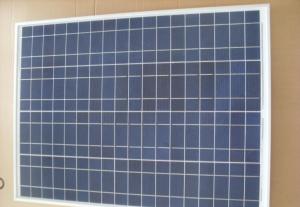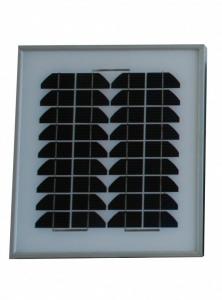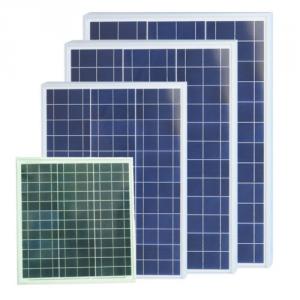4.5w Poly Solar Panel Mini Solar Panel Hot Selling Solar Panel CNBM - Price of Solar Panels Over Time
- Loading Port:
- Qingdao
- Payment Terms:
- TT OR LC
- Min Order Qty:
- 10 set
- Supply Capability:
- 300000 set/month
OKorder Service Pledge
OKorder Financial Service
You Might Also Like
Polycrystalline Solar Modules
CNBM offers a range of small, medium and large polycrystalline solar modules, designed for a range of requirements.
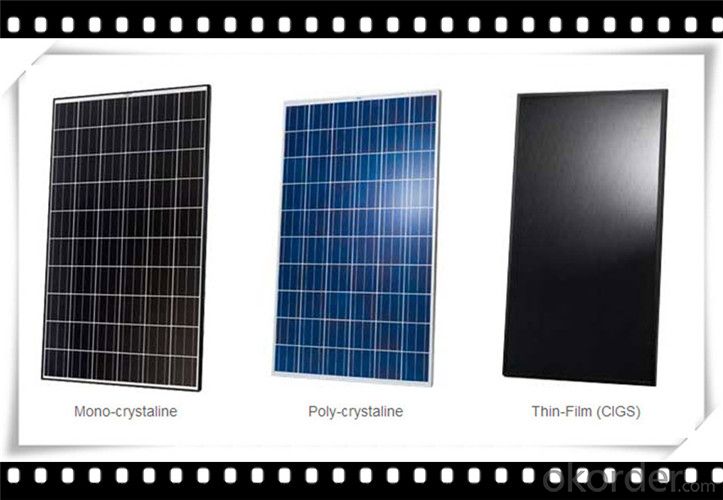
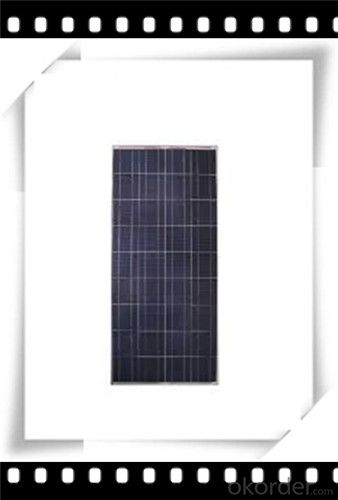
Specifications:
+/-3% |
Polycrystalline silicon solar cells (156 x 156mm) |
60 (10 x 6) |
1650 x 990 x 40 |
25.5 |
Limits:
Operating Temperature | -40~+85? |
Storage Temperature | -40~+85? |
Maximum System Voltage | 1000 VDC max. |
Hail Impact | Diameter of 28mm with impact speed |
Temperature and Coefficients:
NOCT | 48C+/-2? |
Voltage temperature coefficient (%/K) | -0.35 |
Current temperature coefficient (%/K) | 0.05 |
Power temperature coefficient (%/K) | -0.45 |
Characteristics:
Model: | SGM-200P | SGM-210P | SGM-220P |
Max-power voltage Vmp (V) | 29.2 | 29.4 | 29.41 |
Max-power current Imp (A) | 6.85 | 7.14 | 7.48 |
Open-circuit voltage Voc (V) | 36.5 | 36.69 | 36.9 |
Short-Circuit Current Isc (A) | 7.28 | 7.6 | 7.93 |
Max-power Pm(W) | 200 | 210 | 220 |
Model: | SGM-230P |
Max-power voltage Vmp (V) | 29.8 |
Max-power current Imp (A) | 7.72 |
Open-circuit voltage Voc (V) | 37.31 |
Short-Circuit Current Isc (A) | 8.19 |
Max-power Pm(W) | 230 |
STC: Irradiance 1000W/m2, module temperature 25?, AM-=1.5
Poly Crystalline Solar Panels Specifications Range
Maximum Power (Pm) | Dimension | Weight | Operating Voltage (Vmp) | Operating Current (Imp) | Open Circuit Voltage (Voc) | Short Circuit Current (Isc) |
0.45W | 140x80x10mm | 0.08kg | 3.3V | 150mA | 4.6V | 160mA |
1.0W | 162x140x10mm | 0.16kg | 7.5V | 150mA | 10.3V | 160mA |
4.5W | 269x251x23mm | 0.8kg | 16.5V | 0.27A | 20.5V | 0.3A |
10W | 420.1×268.9×22.6mm | 1.92kg | 17.5V | 0.58A | 20.5V | 0.6A |
20W | 425x502x50mm | 3.0kg | 16.8V | 1.19A | 21.0V | 1.29A |
30W | 593x502x22.6mm | 3.9kg | 16.8V | 1.78A | 21.0V | 1.94A |
40W | 655x537x50mm | 5.75kg | 17.3V | 2.31A | 22.1V | 2.54A |
50W | 839x537x50mm | 6.0kg | 17.5V | 2.9A | 21.8V | 3.17A |
65W | 1111x502x50mm | 7.2kg | 17.6V | 3.69A | 22.1V | 3.99A |
80W | 1204x537x50mm | 7.7kg | 17.6V | 4.55A | 22.1V | 4.8A |
- Q: Are solar panels durable?
- Yes, solar panels are generally durable. They are designed to withstand harsh weather conditions, such as rain, snow, and wind. Additionally, they have a long lifespan, typically ranging from 25 to 30 years. However, the durability may vary depending on the quality of the panels and the installation process.
- Q: is a wind turbine better than solar panels
- solar water heater and solar power system.
- Q: How do solar panels affect the resale value of a home?
- Solar panels can have a positive impact on the resale value of a home. Studies have shown that homes equipped with solar panels tend to sell faster and at a higher price compared to those without. This is mainly because solar panels offer potential buyers the benefit of reduced energy costs and a more sustainable lifestyle. Additionally, the presence of solar panels can enhance the overall appeal and desirability of a property in today's environmentally conscious market.
- Q: Can solar panels be installed on wearable devices?
- Yes, solar panels can be installed on wearable devices. However, due to the limited surface area available on wearables, the amount of energy generated may be relatively low compared to larger solar installations. Additionally, the efficiency of such panels may vary based on the device's orientation to the sun. Nonetheless, incorporating solar panels on wearables can contribute to extending battery life and enhancing their overall sustainability.
- Q: Can solar panels be installed on a canopy or pergola?
- Yes, solar panels can be installed on a canopy or pergola. In fact, installing solar panels on these structures can provide dual benefits, offering shade and generating renewable energy simultaneously. This innovative approach allows for the efficient utilization of space and can be a great solution for homeowners or businesses looking to maximize their solar energy production while enhancing their outdoor living spaces.
- Q: what parts and tool do i need to build and connect a solar electric panel to my home
- Solar energy is very expensive. Or I should say, solar panels are expensive, because once you install them the power is free. A typical residential solar power system that supplies around a kilowatt of power at best conditions (noon, sunny day) will cost about $0,000. This includes the solar panel, the inverter (converts DC into AC), the cabling, but not installation (that would probably run you another $2000). One kilowatt is not that much electricity. It would run one microwave oven, or one hair dryer, or 0 light bulbs, and nothing else. Most houses use 3 times that at peak hours. So you would still likely get some power off the grid at peak time, and other times you can sell it back to make a little money. The good news is that solar panels are getting cheaper. They are around $5 per watt now, and are projected to drop to half that in the next decade. At some point, it will reach the sweet spot that makes solar an attractive alternative to grid power and more people will jump on board. There are some tax incentives too, but more would certainly help.
- Q: Would it be possible to use a lens or a mirror to focus light onto a solar panel in order to make in more efficient? And is something like this already being used? It was just a thought and I haven't spent much time on it, but I figured I'd ask.
- yes it is being done. i've seen adds for such a system. on the other hand, if you had a 5 sq in Lens focused on a small cell, and a 5 sq in cell, they'd be about the same. in fact, the cell might be a bit better because (A) there wouldn't be any loss in the Lens, and (B) it might be that the solar cell would use some frequencies to which the Lens was opaque. in addition, the cost of solar cells is dropping, making the cost of the mirrors or lenses uneconomical by comparison.
- Q: i am very new to the solar world and i need help with some stuff to understand what i need to do.what AH battery should i use? i am planning on getting a 2V deep cycle gel based battery but i want to get the most power for my system so should i use something like a few 00AH in a battery bank system or a bunch or 50 or so amp hour batteries in a bank. also what kind of power am i looking at for the best battery system. in other words what kind of basic appliances like lighting, laptop,space heaters etc can can i run on the selected battery system and for how long? any help would be highly appreciated.
- This site has some good info and links to more info about renewable and alternative energy. Hope it helps you. Good luck.
- Q: I really need to know about the good companies who are selling good quality home solar panels.I lives in Pakistan, solar panels sell here are cheap but they doesn't work for long time, mostly they are quot;made in chinaquot;.Consumption of units of our house written on our electricity bill is 300.My dad is seriously thinking of purchasing a solar energy system for house that long last and works efficiently.So plz help me out.
- Solar okorder
- Q: Okay, me and my friends are going to fix up an old trailer that's out in the woods, we want something to be able to run small electric appliances off of, but it's to far to run power to. How can we make a good but cheap homemade solar panel that we could plug things into? The trailer is in more of a field so it gets plenty of sunlight! Thanks for any help! :)
- you cant make solar panels to generate electricity at home. A LOT of high tech equipment is needed. About the cheapest option is to use solar powered garden lights but that is all you'll get is a bit of light.(Google making solar panels) You should be able to make up a windmill powered generator though (but dont expect much power out of something you can make easily) Do some research yourself
Send your message to us
4.5w Poly Solar Panel Mini Solar Panel Hot Selling Solar Panel CNBM - Price of Solar Panels Over Time
- Loading Port:
- Qingdao
- Payment Terms:
- TT OR LC
- Min Order Qty:
- 10 set
- Supply Capability:
- 300000 set/month
OKorder Service Pledge
OKorder Financial Service
Similar products
Hot products
Hot Searches
Related keywords
